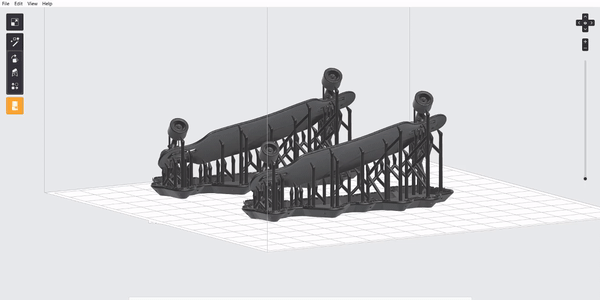
By Paul Vizzio
3D scanning is just like traditional document scanning, but it does so in three dimensions. As with standard scanning, 3D scanning takes a physical object and creates a digital version you can store on your computer and do with as you please. In traditional scanning you can save your file as a JPEG or PDF and then touch it up in Photoshop or Illustrator, similarly with 3D scanning you can save your file as an STL and then manipulate in SolidWorks or send directly to a 3D printer. 3D scanning is great for quality assurance checking, reverse engineering, artifact preservation, and many other applications.
This being part of our "Introduction" series we're going to go over the basics of what 3D scanning is and how it can be used, we'll save the details for a "How-To" post in the future. For this entry, we're going to scan my longboard; it's large, has a bunch of small features, uses several different materials, and most importantly it's not a customer's product so we don't have to worry about breaking any non-disclosure agreements. We'll show the process from start to finish of getting a 38.4 inch longboard into a laptop and what you can do with that.
Scanning

Our particular scanner, the EinScan-SP uses distributed light and a couple cameras to measure the 3D shape of physical objects. It reads how the light reacts and bends to the object and can covert this to 3D data via computer software (in our case the software is provided with the scanner for free). The gif may look like a miniature disco party, but the data we get from this is extremely precise with accuracies under 0.05mm possible; you'll see shortly that it's accurate enough to get the grip tape details and the small cork pattern on the bottom of the deck. On top of that, the data shows up visually on our computer screen just seconds after the light show is finished. You'll notice we're only scanning a portion of the longboard here; this is because the scanner we have does not work well on very large parts, but you can scan sections piece by piece and the provided software will match it all up in real time after each scan.
Converting

Every time our scanner runs it converts the physical board into data points viewable by the computer software. The above gif shows a sped up process of every section we scanned and how it stitches it all together to make one solid object.
Digital Data

We've finished scanning every piece of the board and you can now see the final model. Right now this is a huge collection of point cloud data, meaning that the smooth blue surfaces you see are actually just many thousands of little blue dots spaced closely enough to look like a smooth surface. Our scanner's software can interpolate all of the space between these dots and output a full 3D CAD model that can be used by other CAD programs or directly to 3D printer programs.
Operating with the Data


Here is where the magic comes in with 3D scanning; opening and operating on the data in your 3D CAD program of choice. Our CAD software preference is SolidWorks. If you are reverse engineering or quality checking the scanned piece, you can measure an infinite number of critical dimensions you might not have had easy access to. If you're trying to make new features for the part (say new trucks for the board) you can fit check virtually before committing to spending money on building something. If you've got some ideas for modifications to the parts you can do so on your computer before making irreversible changes to the physical piece.

An Example


As an example of something practical that can be done with 3D scanning, we 3D printed 1/10th scale models of the longboard using Vizeng's Form 2 printer. We didn't even need to use any 3D CAD software for this, we directly opened the output file from our 3D scanning program in our 3D printer's software, set up some support structures, and clicked print.

No comments:
Write comments